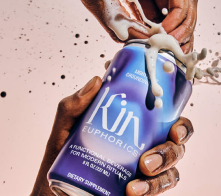Every ecommerce brand hopes to keep customers returning for more — it’s what your customer retention strategies are all about. But how do you measure the value of those repeat customers? This is where Customer Lifetime Value (CLV) comes in.
CLV is a popular customer retention metric and a way of estimating the total revenue you can expect to earn from a customer throughout your relationship with them. We can’t see into the future, but we can use a CLV formula to predict how much a customer might spend with you. Calculating CLV is simple:
Customer revenue x Customer lifespan = Customer lifetime value
So, for example, if a customer spends an average of $50/month and stays loyal to your brand for three years, their CLV is $1800. Boost a shopper's CLV by encouraging them to spend more, make frequent purchases, or extend their relationship with your brand.
Why increase CLV? The most obvious benefit is that boosting CLV means more revenue. Customers with a higher CLV are also more likely to be loyal to your brand and may influence their friends and family to shop with you.
Many customer retention strategies focus on increasing CLV. Spoiler alert: The overall theme is providing an exceptional customer experience and engaging your audience with relevant, personalized communication.
Triggers:
- A new or returning customer makes a purchase
- A customer adds something to their cart but does not complete the purchase
Action:
- Make a good first impression with your initial email flow to new customers. Whenever possible, personalize messages based on customers’ unique demographic, financial, and lifestyle data.
- Use rewards and referral programs to thank your loyal customers and incentivize them to promote your brand.
- Add SMS to your arsenal. Engage customers with personalized text messages in addition to email flows.
- Make sure you’re reaching the right audiences. Automatically cull your email list so your messages only reach active, engaged users.
- Target customers with abandoned carts by sending personalized reminder emails. Abandoned carts show a strong intent to purchase, and you can reclaim a significant amount of revenue if you can get those shoppers to complete their purchases.
- Regularly solicit customer feedback and demonstrate genuine interest in their concerns. This is another great way to engage with your customers, build trust, and earn long-term loyalty.

